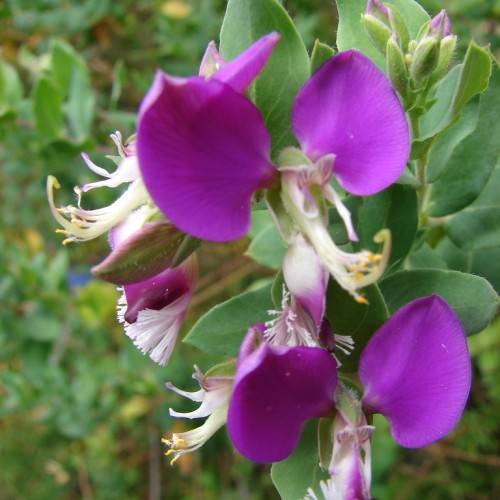
sweet pea shrub
Polygala dalmaisiana
Cycle:
Perennial
Watering:
Average
Hardiness Zone:
9 - 11
Flowers:
Flowers
Sun:
Full sun,part shade
Leaf:
Yes
Growth Rate:
Low
Maintenance:
Moderate
Salt Tolerant:
Yes
Care Level:
Medium
watering
Sweet pea shrubs should be watered 1 to 2 times per week. Water the plant deeply so that the soil is evenly moist. During the spring and summer months, be sure to check the soil every few days to make sure it is staying moist, as the plant will likely require more frequent watering during hot weather. During cooler winter months, you can reduce the frequency of watering and just allow the soil to become slightly dry between watering.
sunlight
Sweet pea shrub (Polygala dalmaisiana) prefers to be grown in full sun or partial shade exposures. This species does best when exposed to 5 or more hours of direct sunlight per day. In warmer climates, the shrub benefits from some protection from the more intense afternoon sun. In cooler climates, the shrub may need additional hours of sunlight to withstand the cooler temperatures. Too much shade can cause the shrub to do poorly.
pruning
Sweet pea shrubs should be pruned in the late spring to early summer, just after they have finished flowering. Cut off the stems that have finished flowering, cutting them back to a pair of strong leaf buds or even better - a growth point. Prune any branches that cross over each other, and also any that grow too long or outside the desired shape. If there are any dead or diseased stems, cut them back to healthy wood. Generally, sweet pea shrubs can be pruned lightly every year to keep them healthy and neat, but the amount of pruning should be moderate. Pruning too much can reduce flowering and weaken the plant.
